Oklahoma City says it can reduce unsheltered homelessness by 75% in two years. Here's how
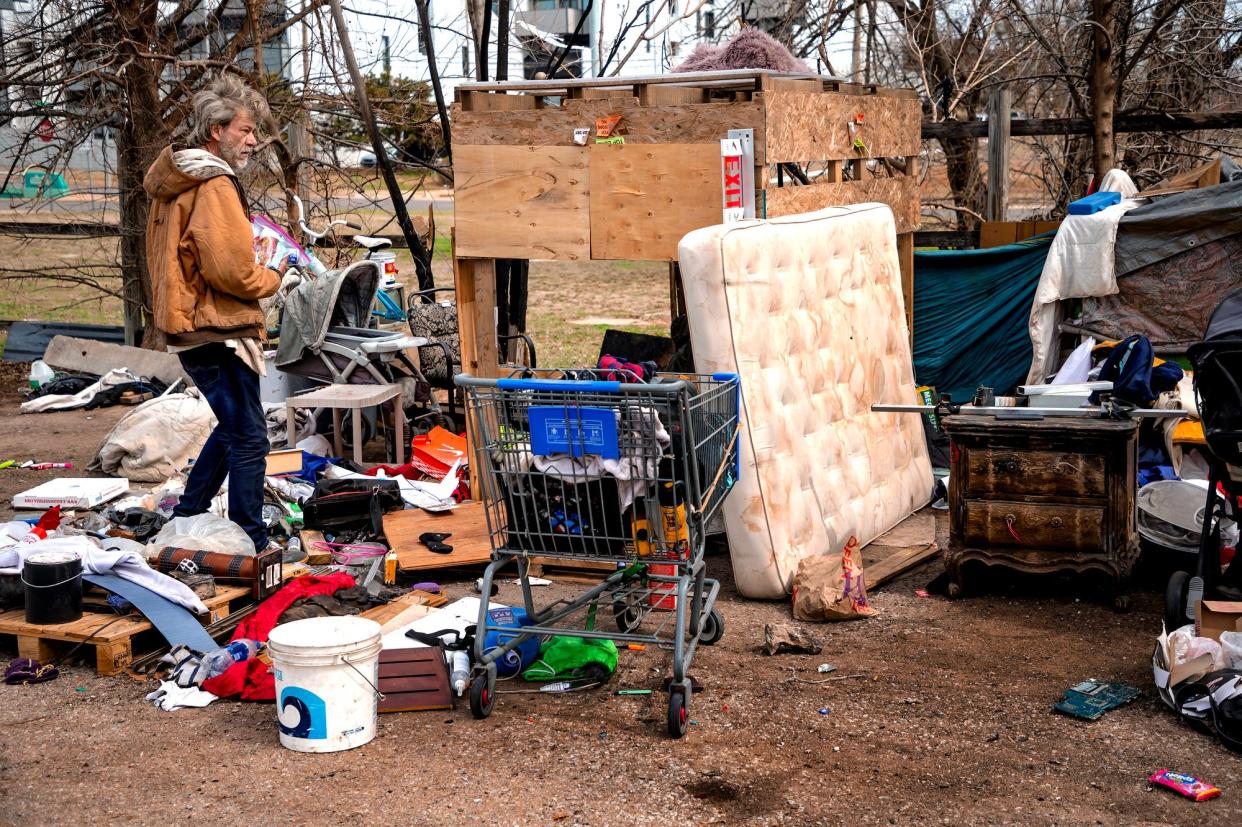
Oklahoma City wants to spend $12.5 million over the next two years to significantly reduce the number of people living on the streets and in homeless encampments, taking a page from Houston's playbook.
After successfully "decommissioning" two homeless encampments using outreach and available housing in the latter half of 2022, city leaders and service providers presented a plan to implement the framework as a transformation of the way the city manages homelessness. Under the "Key to Home" encampment rehousing initiative, the city hopes to reduce the number of unsheltered homeless people by 75% by 2025.
This two-year plan, through which the city hopes to house 500 chronically homeless people, is in contrast to an ordinance that was proposed by Councilman Mark Stonecipher and struck down in November that would have allowed police officers to arrest people in homeless camps on trespassing complaints if they refuse to leave after a warning and citation.
Lindsay Cates, strategy implementation manager for the city's Homeless Services department, said that though law enforcement patrols will be present after the encampments are closed down, there will be no punitive measures taken against people that try to return.
"Patrols are really just to connect," Cates said. "If people are there that are starting to look like they're setting up housing, we want our outreach to be engaged. The goal is not a punitive measure, but to connect them to resources."
Homelessness: OKC's first city-funded non-police homeless crisis response team to hit the streets soon
How Oklahoma City will close homeless camps
The decommissioning homeless camps model was pioneered by Houston, and Cates said the US Department of Housing and Urban Development is supporting communities who decide to try it out.
Houston has seen a 64% reduction in homelessness and a 70% reduction in the unsheltered population since its implementation.
Cates said that based on the two camps already closed, the city believes it can house the inhabitants, clean up the area and have the camp decommissioned in three to six weeks.
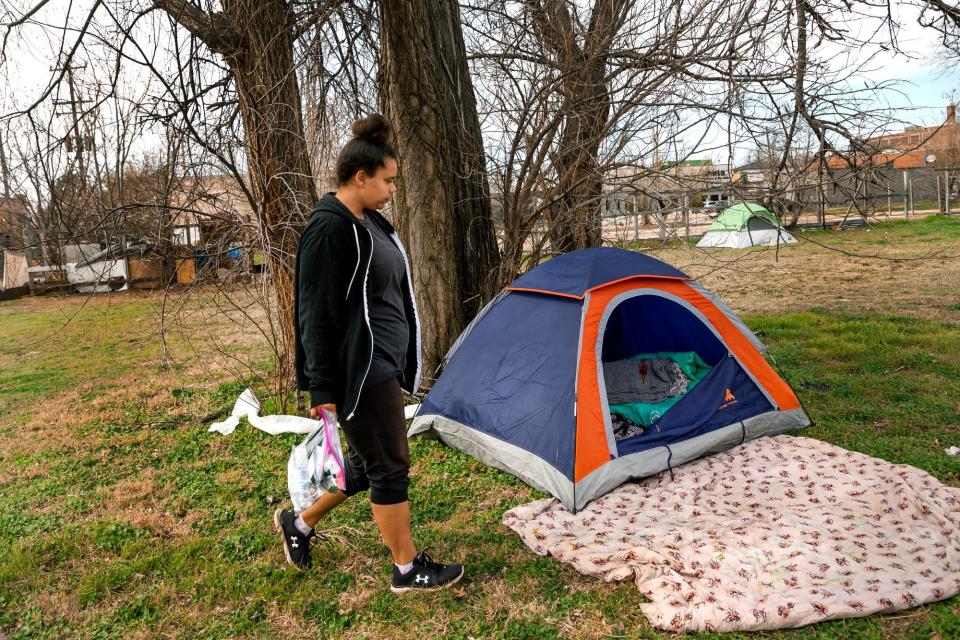
There are four steps to the process:
Engagement and outreach. Using outreach teams such as those staffed by the Mental Health Association, a foundation of trust is built.
Identify rental units. During outreach, people such as the unit acquisition team at City Rescue Mission will engage with landlords and negotiate deals that might include incentives and bonuses for holding a unit.
Move-in and stabilization services. Case managers like those with the Homeless Alliance will meet with camp inhabitants a week or so after outreach folks have done so, and help with things like applying for housing, packing belongings, transport to the unit and delivering move-in kits and furniture. Case managers also will provide stabilization services weekly after moving in.
Resolution and closure maintenance. Once people have moved into housing, the police department's Homeless Outreach Team will post notices, as well as conduct daily outreach for anyone that hasn't moved, and eventually post no trespassing signs. Police also will coordinate with other departments to do trash and brush removal.
Affordable housing: OKC council votes to give housing authority $55M to renovate, build
With the two camps the city has cleared so far using this model — which were both on public property and located at General Pershing and NW 1 Terrace, and S Lee and SW 2 — Lt. David Dale, with the Homeless Outreach Team, said no one has returned so far. This was a common issue when camps were previously cleared without providing housing, Dale said.
Cates said this process will be more intentional, faster, more supportive and more collaborative than how the city is currently addressing unsheltered and chronic homelessness.
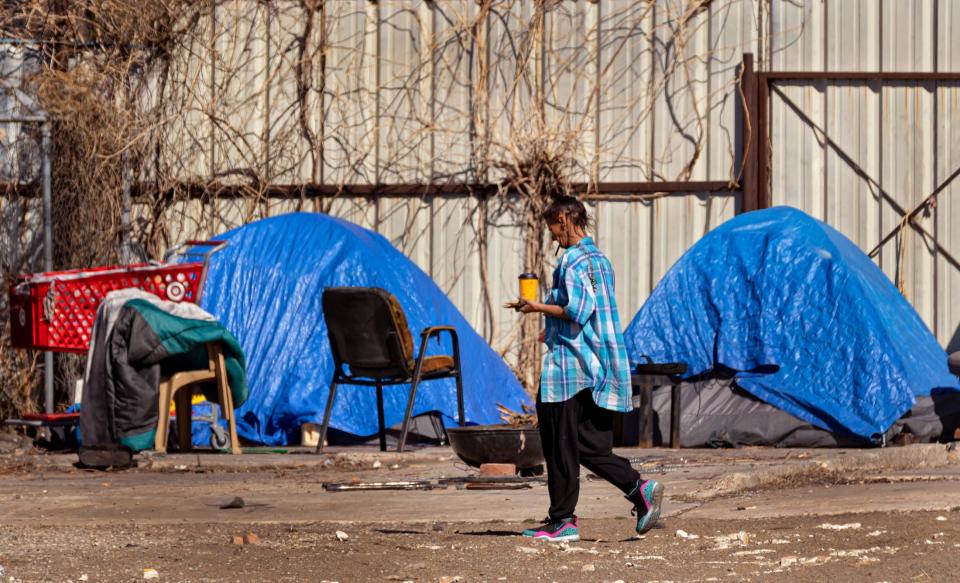
How many people are homeless in Oklahoma City?
During 2022's one-day "point in time" count in Oklahoma City, 1,339 people were counted experiencing homelessness.
Of those, 475 were considered "chronically homeless" — meaning a person with a disabling condition that has been continually unhoused for at least a year, or at least four times in three years with a combined total of at least 12 months.
There were also 471 people living outside, considered "unsheltered."
Will it work? Los Angeles has an ambitious plan to end homelessness and clear tent cities.
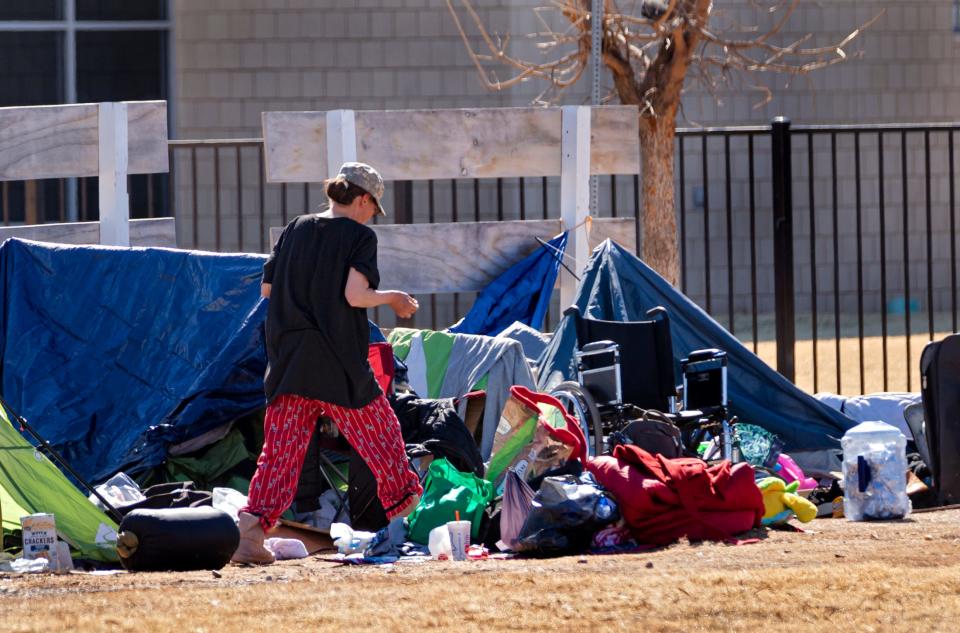
How the $12.5 million will be used to reduce OKC homelessness
Here's a breakdown of how the money will be spent:
$1.3 million in public and private funds on a housing navigation center, which will include interim residential beds
$6.9 million in public and private funds on rental subsidies, including security deposits for 500 people for 1 year
$2 million in public and private funds on stabilization services and case management for 500 people for 1 year
$1 million in private funds on landlord incentives and move-in kits, including hold fees, furniture, household supplies and food
$300,000 on an expanded management team
$1 million on administration
The city spends about $9 million each year on homelessness, two-thirds of which comes from federal funds. This number includes paying for the city's night and day shelters, emergency winter shelter and rapid rehousing.
Also, costs that are not quantified include litter reduction, property damage and repair, emergency response and court costs.
The $12.5 million proposed would be split over two years and would be in addition to the funds the city is already spending on homelessness services. But, Cates said this investment will save taxpayers money in the long run.
According to the National Alliance to End Homelessness, chronically homeless individuals cost taxpayers an average of $35,000 per year in crisis services. With about 500 chronically homeless individuals, this comes to about $17.5 million per year for Oklahoma City taxpayers. Other costs to the community include deferred economic development, impact on quality of life and tourism.
'Not just counting people.' Volunteers comb freezing OKC to gather key data on homeless
Other efforts to end homelessness in OKC
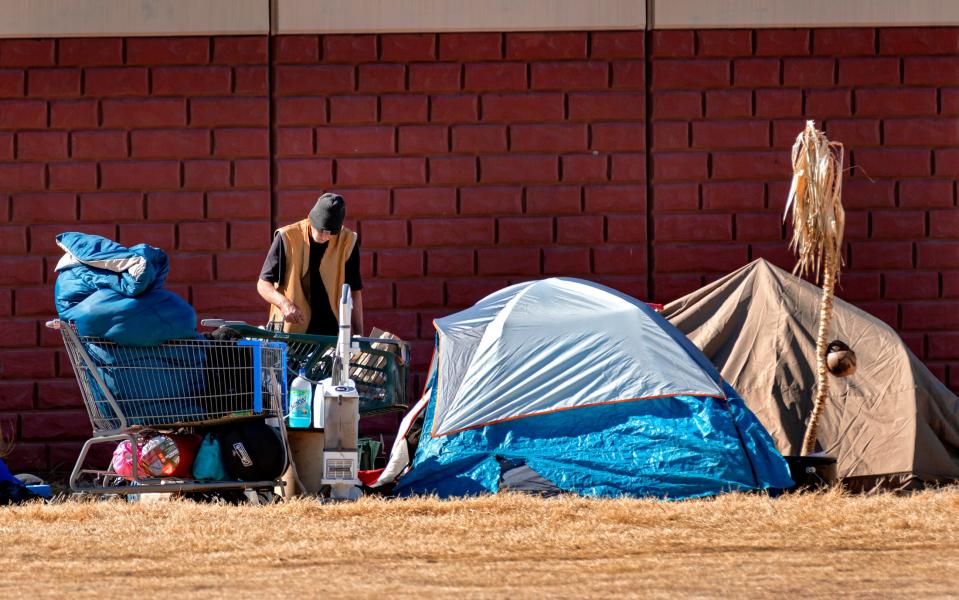
This initiative is one of many things the city is doing to reach its goal of ending homelessness in Oklahoma City.
Funded by the MAPS 4 penny sales tax, $55 million will be spent on renovating the city's public housing stock and building new affordable housing. The funds and properties will be managed by the Oklahoma City Housing Authority, a decision that was controversial during city council discussions.
The city also is funding two new homeless street outreach teams that will be staffed by the Mental Health Association, which also runs the A better Way program that provides a day's work, as well as employment connections, to panhandlers.
And in December, the city approved five new projects specifically tailored to prevent and end youth homelessness.
This article originally appeared on Oklahoman: Oklahoma City's unsheltered homeless population could go down by 75%

